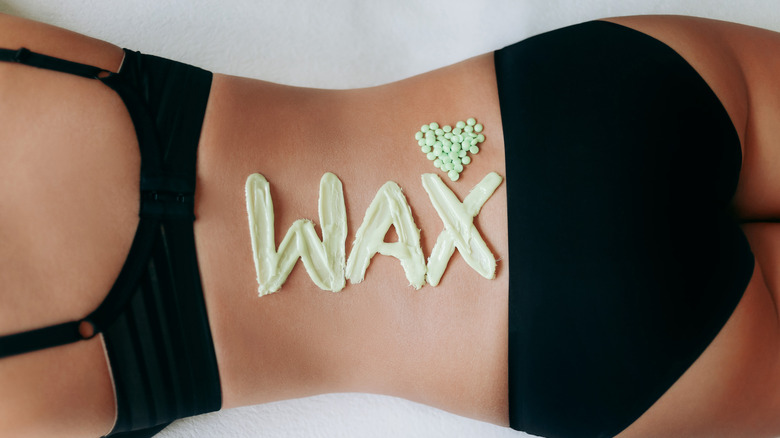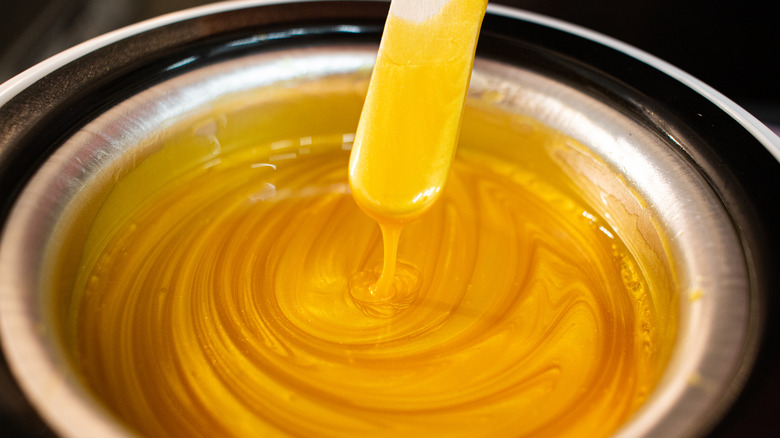Hard Wax Vs. Soft Wax: What's The Difference?
If you're looking for smooth, hairless skin on your face or body, waxing is one of the most effective hair removal techniques out there, as it takes out the hair from the root, meaning it has long lasting effects as opposed to shaving. In fact, Healthline reported that with waxing, it can take up to three weeks before you begin to see new hair poking through.
While this may prompt you to book an appointment at a salon or head down to your nearest drugstore as soon as possible, if you're looking to get waxed, it's important to do your research on what you should use depending on the area of your body for your comfort and safety. Many may not know that there are actually two main types of wax: hard wax and soft wax. But what are the differences between the two, and which one should you use based on your needs? Keep scrolling to find out.
The pros and cons of hard wax
Hard wax is a thicker yet gentler option that needs to be warmed up (ideally around 130° Fahrenheit) before applying. It works by adhering to the hairs, opening up the pores from the heat. Because of this, no strip is necessary, as it hardens and can be pulled off the skin in its final form by the hands. Hard waxes can be more effective when it comes to removing smaller hairs (from 1/6 of an inch) and hairs in more sensitive, compact areas of the body such as bikini lines, armpits, and face. And according to Crown Beauty Bar, hard wax tends to be less painful on the face and is more effective when it comes to grabbing shorter hairs.
One benefit of hard wax is because of its gentler and non-irritating nature, it can be used on the same area multiple times to guarantee removal of any missed hairs on the first pull. "Since hard wax only sticks to the hair, you can treat and retreat areas to make sure all of the hairs are removed without damaging the skin," dermatologist Hadley King told Healthline. Hard wax also tends to leave less sticky residue behind. However, it is important to note that hard wax is not ideal to use on larger areas of the body such as the legs, as it tends to break more easily in general.
The pros and cons of soft wax
When it comes to soft wax, it also adheres to the skin and hair, as opposed to merely just the hair as hard wax does, offering exfoliating benefits. This also means it removes the outermost top layer of the skin as well once pulled off, making the process overall more painful than hard wax. Soft wax requires a strip to remove, and has increased changes of redness and irritation. Because of this, unlike hard wax, it is not recommended to go through the same area multiple times, even if there are missed hairs (via Healthline).
However, soft wax is optimal when it comes to removing finer hairs in larger areas of the body, such as the legs, arms, and back, because it breaks less easily (via Crown Beauty Bar). Soft wax also tends to leave more sticky residue, but is overall easier to use and cheaper to purchase in general, and can be applied at lower temperatures.


